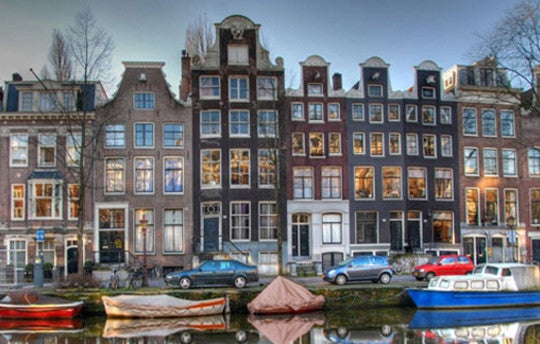Your Cart is Empty

The Dutch have a tendency to embrace every other kind of music but their own. However, there is now a lively world music scene in all of the Netherlands’ main cities, ranging from afro and flamenco to tango and rai.
As the Dutch folk movement of the 1960s and 70s lost momentum and rock took over, many Dutch folk musicians began performing in English. However, the trend was bucked somewhat in the northern province of Fryslân, where a handful of folk groups continued to express themselves in Frisian.
As well as the Protestant north, the southern Catholic province of Limburg is known for its musical traditions. Although dialect-singers such as Harry Bordon have achieved wider recognition, Limburg is best known for its carnival, especially in the city of Maastricht.
Elsewhere in the Netherlands, hardly any other original Dutch roots music is left. However, there are two active revivalist scenes: one digging into the past, the other focusing on the present. The group Törf re-create tunes from the early nineteenth century on the bagpipes and accordion.
Defining world music as “global going local”, Holland offers a lively musical panorama, and foreign sounds have found fertile ground here since the 1900s. In the 1930s Malando started his own tango orchestra in Rotterdam. In the 1980s, influenced by Astor Piazzolla, new tango took over and flourished through ensembles such as the Sexteto Canyengue.
Between the 1930s and 60s East European Gypsy music dominated city nightlife, with the superb bandleaders and violinists such as Lajos Veres and Tata Mirando. With their 1989 debut Seresta, The Rosenberg Trio caused a sensation, and their guitarist Stochelo Rosenberg was received as the new Django Reinhardt.
Until World War II, Jewish cultural life flourished in Amsterdam, which was nicknamed “Jerusalem of the North”. In the early 1990s, this musical tradition was revived with Leo Fuld and performers such as the Amsterdam Klezmer Band. Influenced by Jewish tradition and cante napoletano, the Jordaan lied genre developed in the working-class Jordaan quarter in the 1950s. In the 1990s, André Hazes became a national voice singing popular tunes in the local vernacular.
The harbour city had long been a global village, but new influences were prolific in the second half of the twentieth century. Migrant musicians included Fernando Lameirinhas of Portugal and Zuco 103 of Brazil and Germany, who mixed Latin beats with a jazz flavour, while Noujoum Rai and Railand became the first Dutch-Moroccan rai bands.
Indonesia
The Netherlands has a sizeable community of Moluccan exiles, whose music has Polynesian as well as Indonesian influences. The adventurous duo Boi Akih expands the Moluccan vocal tradition by fusing it with different styles from all over the world.
Suriname and the Dutch Antilles
Migrants from Suriname exercised a strong influence on the Dutch music scene, especially after the country’s independence in 1975. Flautist Ronald Snijders developed his own Suri-funk, while trumpeter Stan Lokhin fused jazz and calypso with Afro-Surinamese influences.
Antillean musicians were also engaged, Izaline Calister mixed her tradition with elements of jazz and pop.
Fusion
This continuing process of crossover has yielded a lively world music scene. The Latin-jazz percussionist Lucas van Merwijk formed his Cubop City Big Band. Tarhana mixes Gypsy grooves with Afro-Anatolian soundscapes, while Arabic folk and American blues resulted in the “arabicana” of No Blues.